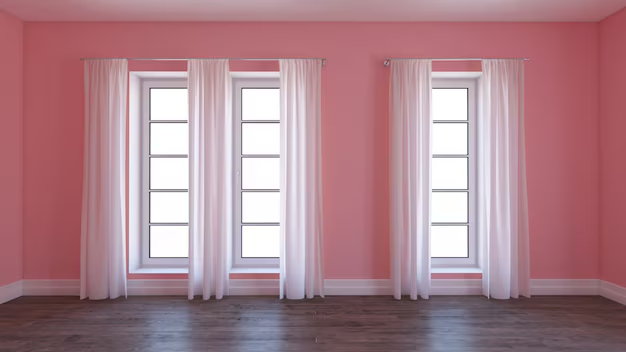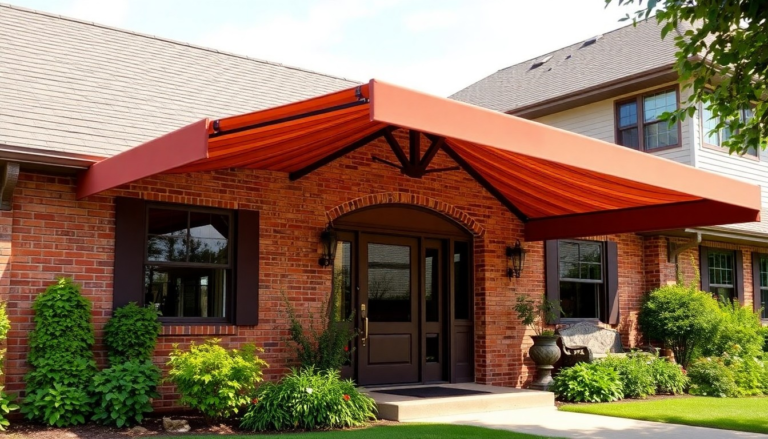Wabi Sabi Interiors: 12+ Ways To Get This Look In Your Home
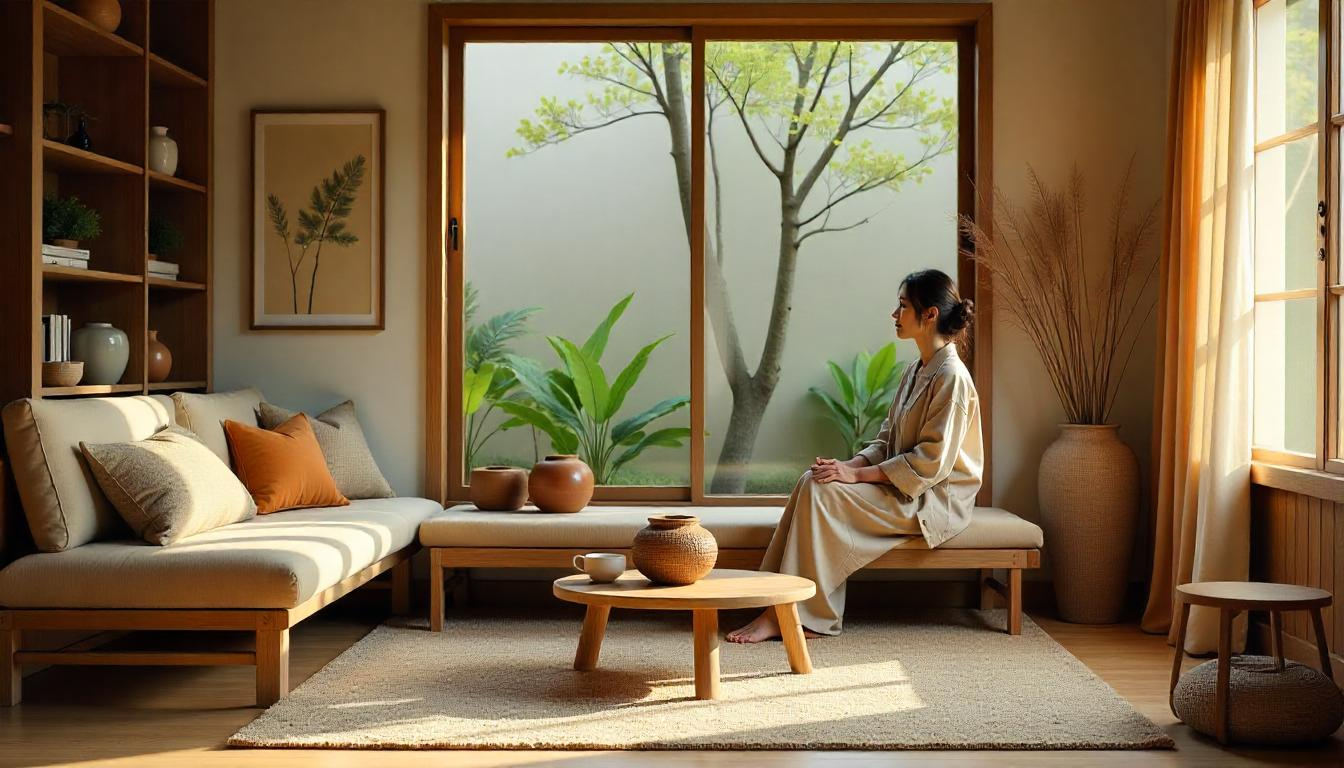
Wabi Sabi is a Japanese design philosophy that celebrates the beauty in imperfection.
It’s about embracing the natural flow of life, accepting flaws, and finding peace in simplicity.
If you’re feeling overwhelmed by the chaos of fast-paced, picture-perfect interiors, this could be the antidote you need.
Wabi Sabi is all about authenticity, raw beauty, and appreciating the passage of time.
In a world obsessed with perfection, Wabi Sabi offers a refreshing break.
Let’s dive into how you can bring this serene, imperfectly perfect style into your home.
These 12+ ideas will not only give your living space a fresh new vibe, but also help you live more mindfully, appreciating the charm of the everyday.
1. Embrace Natural Materials
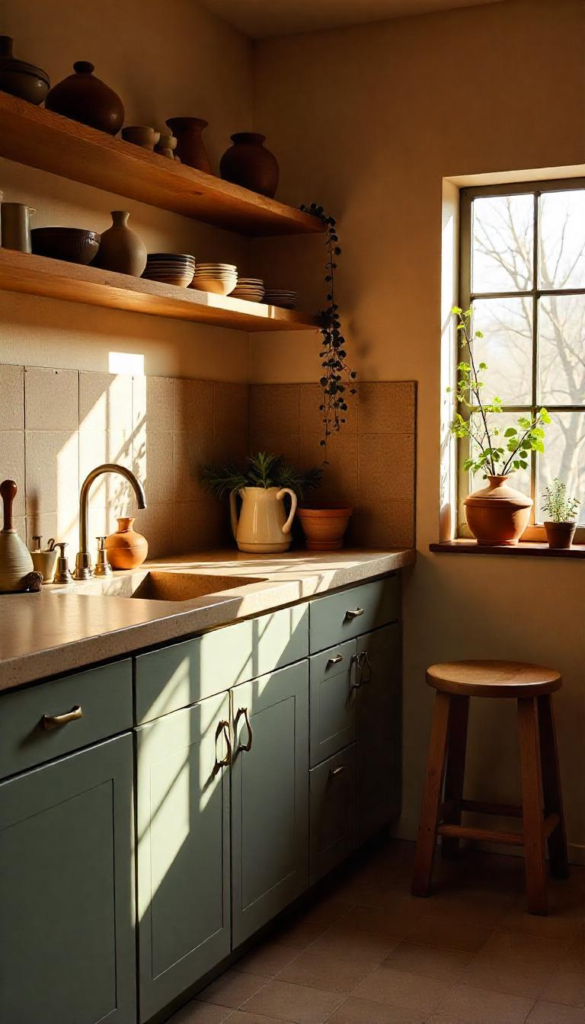
The core of Wabi Sabi is all about natural elements.
This style isn’t about manufactured perfection but instead about things that are real and raw. Wood, stone, and ceramics play a huge role.
Think about incorporating raw, unfinished wood into your furniture, or using stone for a minimalist countertop.
You want pieces that feel earthy, grounded, and unrefined.
Pro Tip: Reclaimed wood pieces work beautifully in a Wabi Sabi setting.
It’s like giving a second life to materials that already tell a story. Maybe even hunt for vintage ceramics with some wear and tear.
They’ll add a rustic charm that fits perfectly with this style.
2. Let Imperfection Shine

Wabi Sabi isn’t just about the materials—it’s about the imperfections in them. In fact, flaws are celebrated.
A crack in your favorite ceramic mug, a dent in a vintage chair, or the uneven grain in a wooden shelf—these are the details that tell a story.
They show the passage of time, and in Wabi Sabi, that’s beautiful.
Anecdote: My grandmother’s old ceramic teapot is chipped in several places. I used to think it was an eyesore.
But once I embraced the Wabi Sabi mindset, I realized that those imperfections were what made the teapot unique and full of memories.
Now, it’s one of my favorite pieces in the house.
3. Keep It Simple
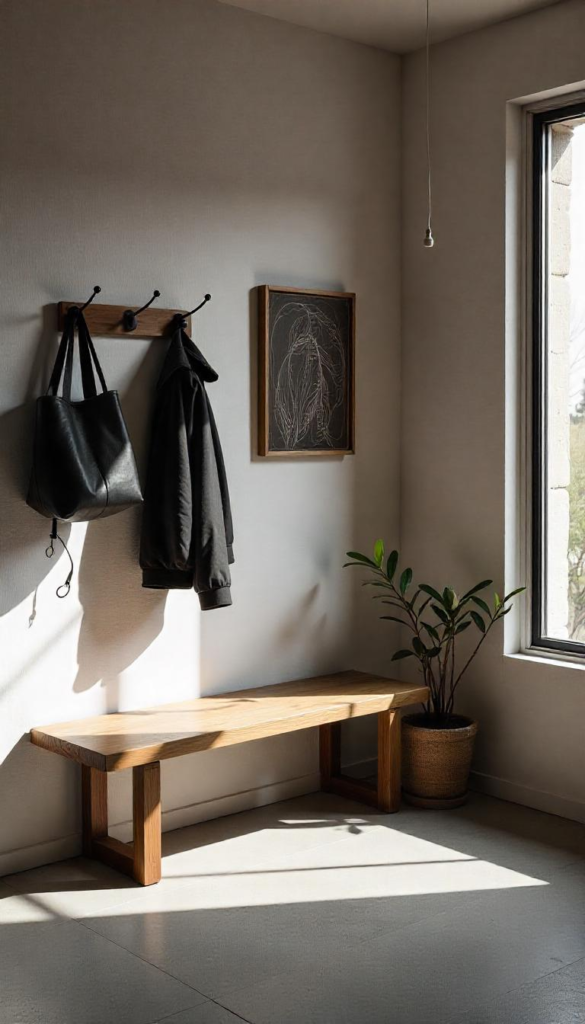
One of the first rules of Wabi Sabi is simplicity.
This doesn’t mean your home should be bare, but rather that it should feel uncluttered and tranquil.
The idea is to create space where you can breathe—where your eyes aren’t darting around overwhelmed by knick-knacks.
Pro Tip: Limit your décor to only the items you love and need.
Think of it as a home for essentialism, where each object serves a purpose and adds value to the space.
A few carefully chosen pieces can have more impact than a room full of trinkets.
4. Incorporate Earthy Colors

Wabi Sabi interiors often lean toward earthy tones—muted greens, browns, ochres, and grays.
These colors connect you to nature and create a calm, serene atmosphere. Gone are the days of overly bold, artificial hues.
Instead, opt for soft tones that blend harmoniously and feel inviting.
Quick Tip: If you’re not ready to go full-on earth tones, start by adding small accents like a soft taupe throw or clay-colored vases.
These subtle additions will bring your space closer to the Wabi Sabi aesthetic without overwhelming it.
5. Go for Handmade Items
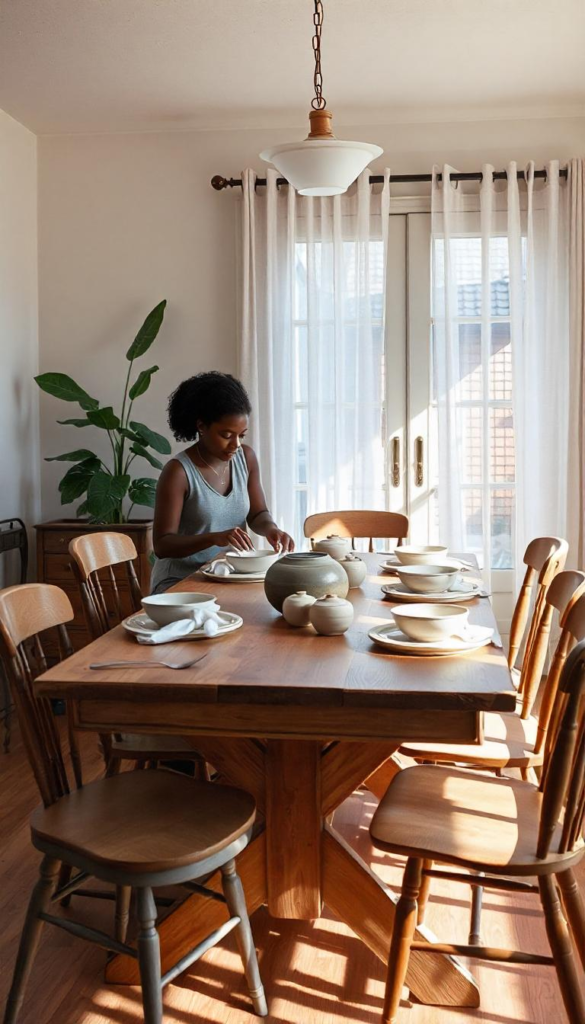
Wabi Sabi treasures the handmade, the crafted with care, and the items that show evidence of the maker’s touch.
Think about investing in handcrafted furniture, artisanal pottery, or woven textiles.
Not only do these items bring texture and character to your space, but they also contribute to the story of your home.
Pro Tip: Visit local artisan markets or even online shops that specialize in handmade pieces.
By investing in one-of-a-kind items, you’re supporting independent creators while also ensuring your space is full of authentic charm.
6. Create an Organic Flow
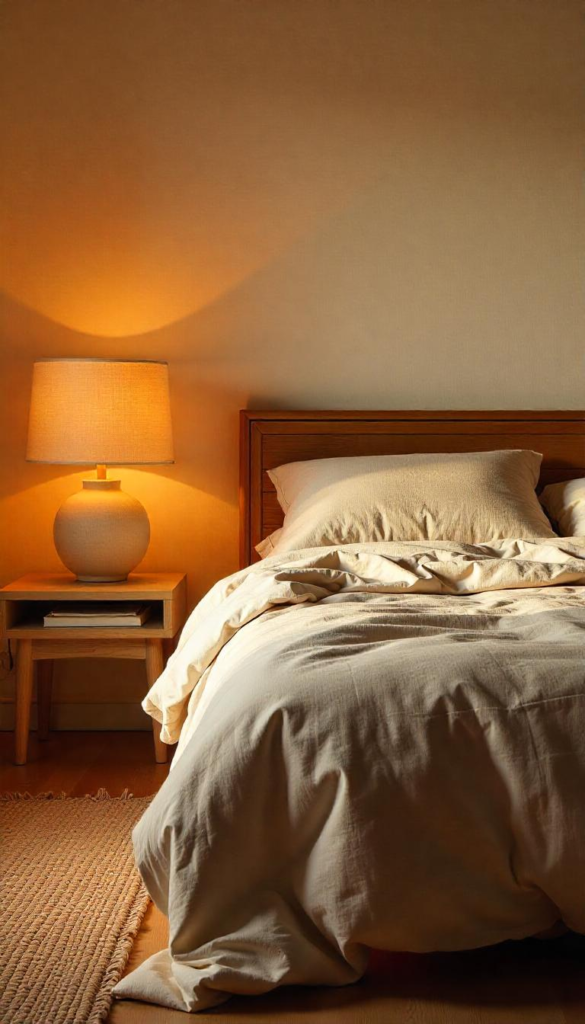
Wabi Sabi isn’t about matching every piece perfectly, it’s about creating a natural flow where items and textures seem to belong together despite their differences.
Don’t be afraid to mix and match—pair a rough stone coffee table with a sleek ceramic vase, or combine a vintage armchair with a new, handmade wool rug.
This creates a dynamic yet calming energy in the room.
Quick Tip: Focus on creating balance rather than symmetry.
Asymmetry is part of the Wabi Sabi charm—it brings movement and a sense of naturalness to a space.
7. Introduce Patina and Weathered Finishes
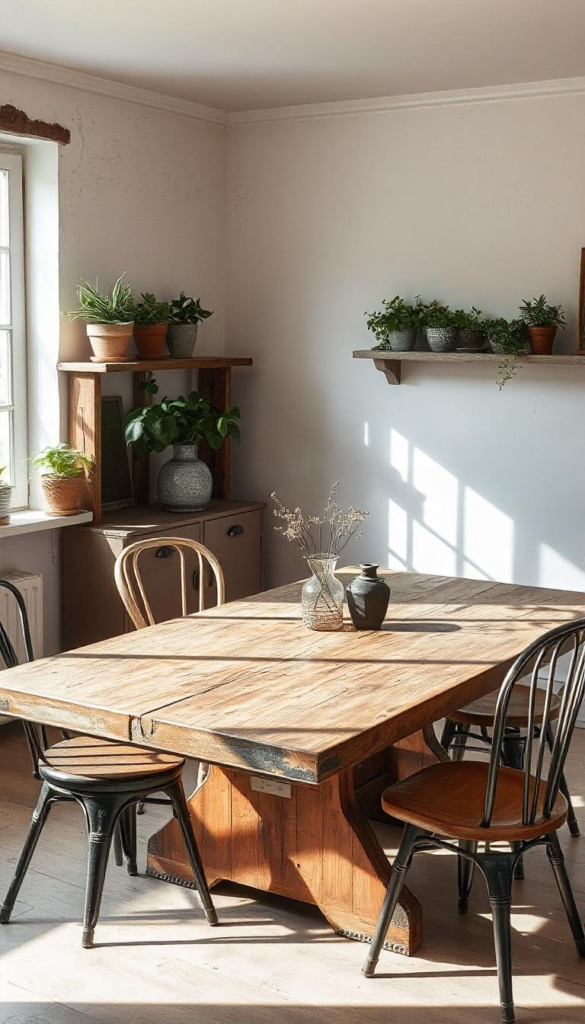
Patina, or the beautiful signs of age, is central to Wabi Sabi.
Whether it’s a leather chair with soft creases or a weathered metal lamp, these finishes bring warmth and character to your home.
These elements showcase the marks of time, giving your space a sense of lived-in comfort.
Anecdote: I once found an old iron candlestick at a flea market, its surface rusted and worn.
At first, I didn’t think it was anything special, but once it was placed on my coffee table, its weathered texture added so much depth and character to the room.
8. Honor the Seasons
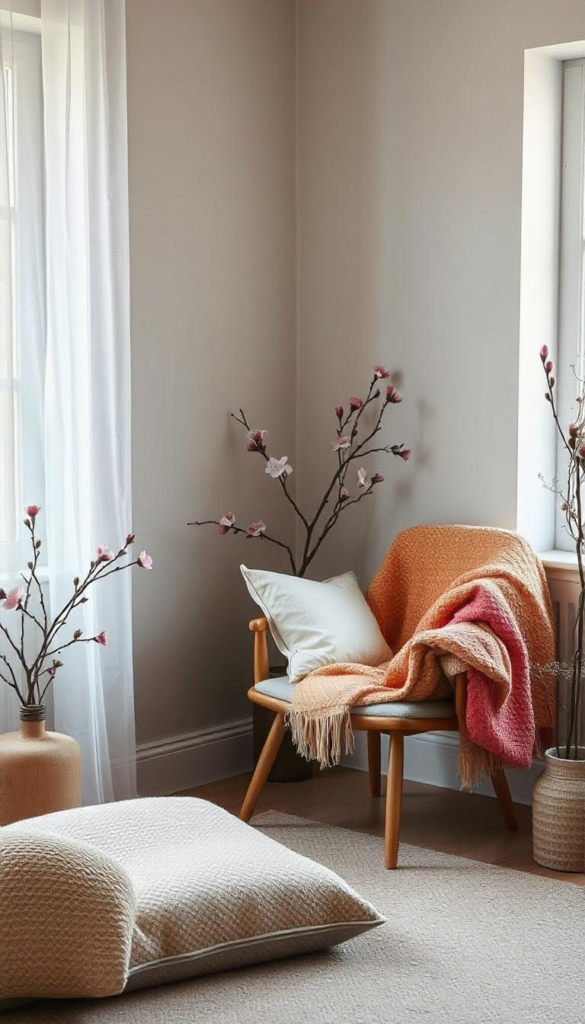
Wabi Sabi connects us to the natural world, and what better way to embrace that than by honoring the changing seasons in your décor? You can make simple, seasonal changes to reflect nature’s cycles—whether it’s adding a few bare branches in the fall or fresh flowers in spring.
The goal is to make your home feel aligned with the rhythm of the Earth.
Pro Tip: You don’t need to change everything seasonally, but a few thoughtful touches like dried flowers or a stone sculpture can make your home feel connected to the world outside.
9. Celebrate Silence and Stillness
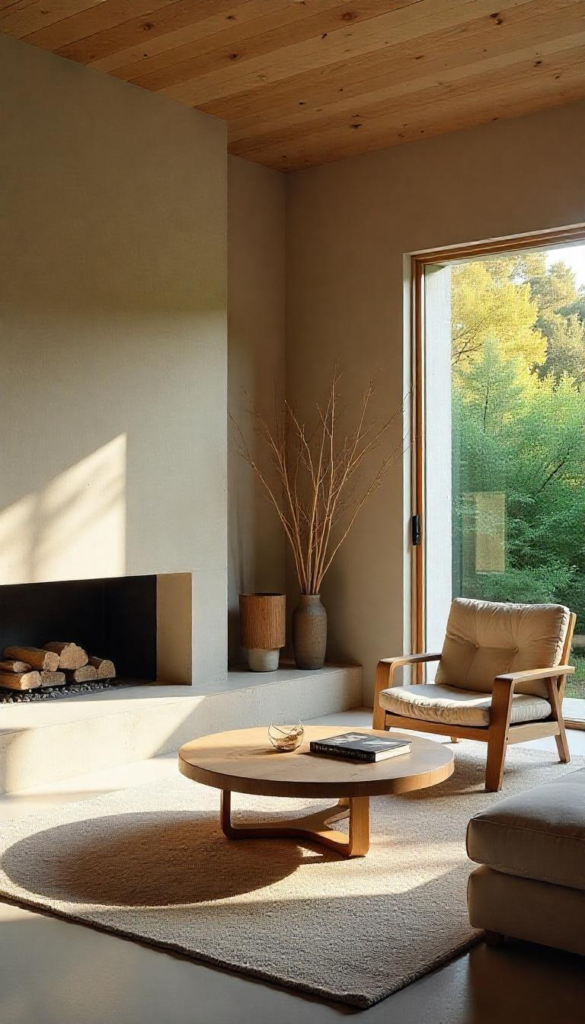
Wabi Sabi embraces the concept of stillness, and often, less is more when it comes to decorating.
In a world filled with noise, creating quiet corners in your home can feel almost revolutionary.
These spaces can be minimalistic—perhaps a simple armchair in front of a window, or a low wooden table with a single plant.
It’s not just about the objects in the space but also the space itself.
Quick Tip: Try incorporating a “quiet zone” where you can retreat from the chaos of daily life.
It doesn’t have to be big—just a corner where you can sit, breathe, and reconnect.
10. Add Organic Textures
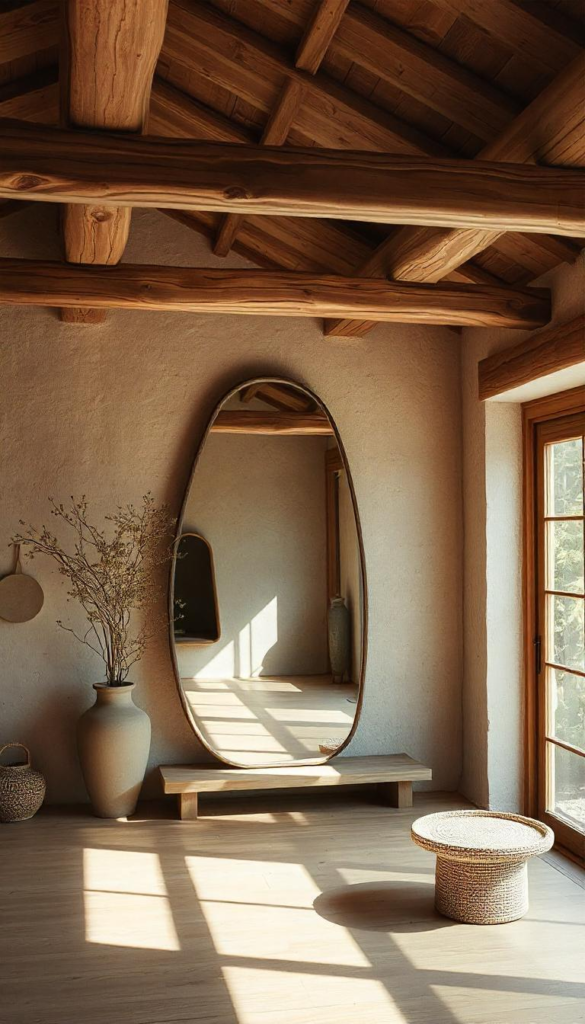
The textures you choose in a Wabi Sabi home are as important as the furniture you select.
Woven baskets, linen cushions, rough-hewn wooden tables, and clay vases all add that raw, organic feel that embodies the philosophy.
The goal is to make your home feel grounded in nature.
Pro Tip: Choose materials that are tactile and offer a sense of connection to the earth.
Linen is a great fabric for cushions or bed linens because of its simple, unpretentious texture.
11. Incorporate Minimal Art
Art in a Wabi Sabi home should be simple and meaningful.
Avoid overly polished or perfect pieces.
Instead, focus on hand-drawn sketches, abstract pieces, or raw, expressive art that conveys emotion without needing to be “perfect.”
Anecdote: I once found a simple charcoal sketch at a local thrift store. It wasn’t a masterpiece by any means, but it felt raw and real.
The imperfect strokes added so much life to my living room, becoming a subtle focal point.
12. Use Natural Lighting
Lighting is key in Wabi Sabi spaces. Soft, natural light is the ideal choice.
Large windows or even small ones that allow light to stream in will make the space feel open and airy.
The goal is to create a space where you can experience the passage of time through the changing light throughout the day.
Pro Tip: If you’re working with smaller windows or less natural light, soft sheer curtains can diffuse the light, making it feel more ethereal and inviting.
13. Keep the Floor Bare (or Nearly Bare)
In true Wabi Sabi fashion, the floor isn’t over-cluttered with rugs or furniture.
Instead, you might want to leave some areas bare or use a single, simple rug to anchor the space.
This lets the natural wood, stone, or tile shine through. It also keeps the space open and easy to move around in.
Quick Tip: Use a low-sitting sofa or simple cushions directly on the floor to give your space an airy, light feel.
14. Bring Nature Indoors
Finally, no Wabi Sabi home is complete without plants.
Indoor greenery connects your home to the natural world and helps bring life into the space.
Even a few strategically placed plants—like a large snake plant or a small bonsai tree—can make a huge difference.
Pro Tip: Choose plants that thrive indoors, such as succulents or ferns, and place them in unique, mismatched pots that show a little wear and tear.
This reinforces the Wabi Sabi love for imperfections.
Incorporating Wabi Sabi into your home isn’t just about decorating—it’s about creating a space that celebrates the beauty of the imperfect.
It’s about inviting a sense of peace, tranquility, and authenticity into your life.
Whether you’re starting small with a few handmade pieces or redesigning an entire room, remember that Wabi Sabi is as much a mindset as it is a design philosophy.
And just like the philosophy itself, your Wabi Sabi home will be full of life, warmth, and stories—perfectly imperfect, just like you.


